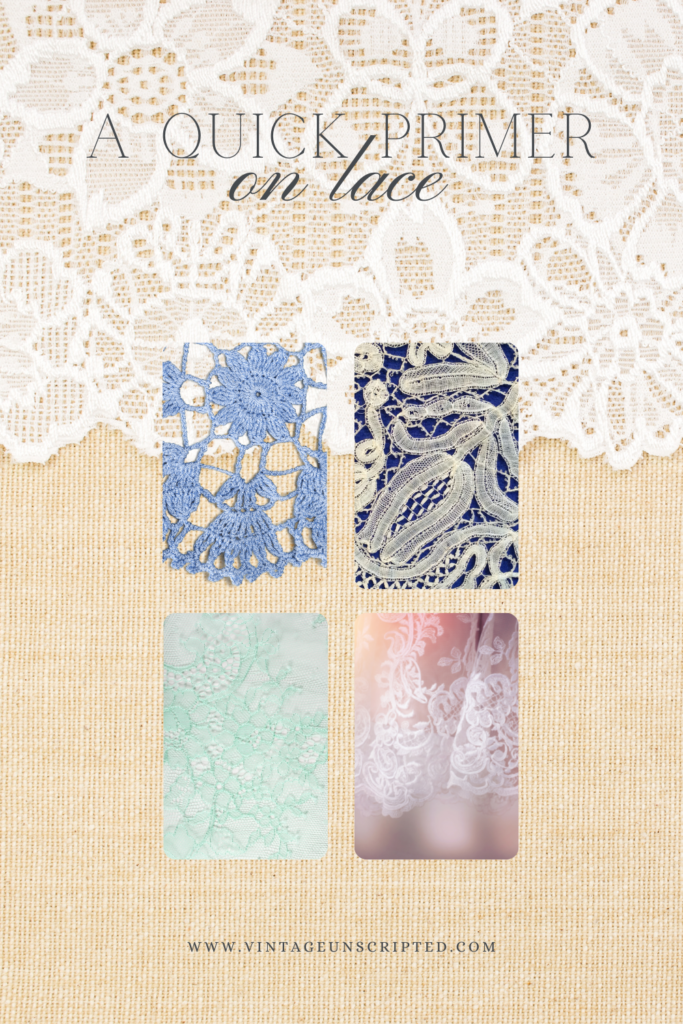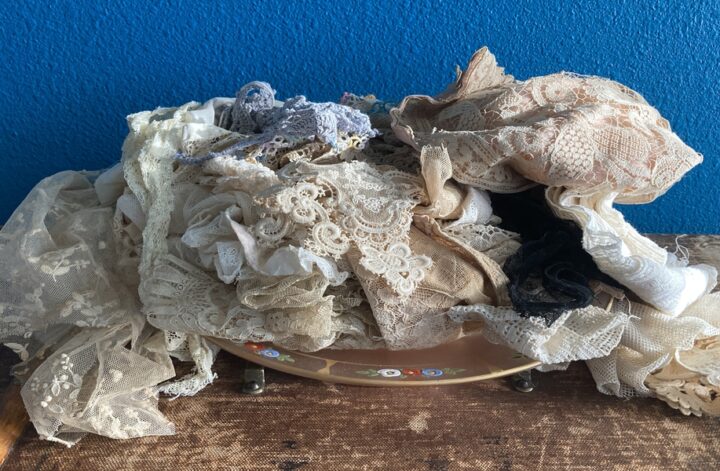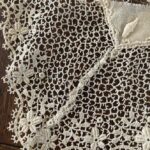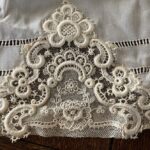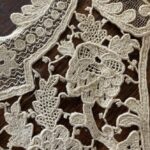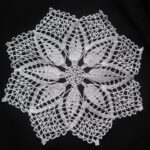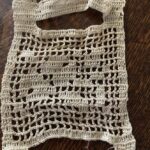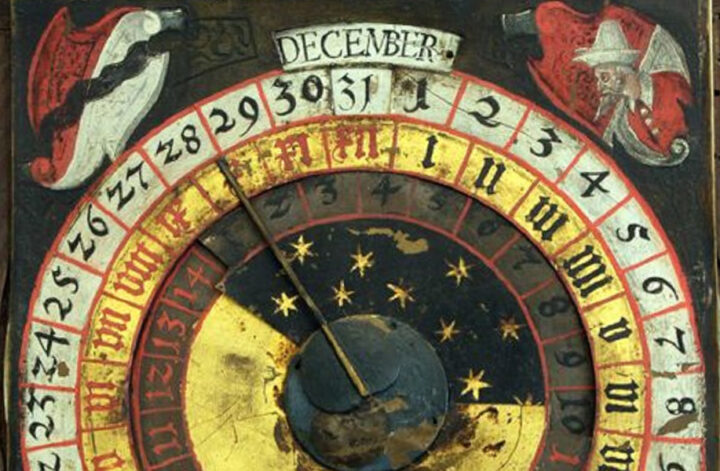How many types of lace can you identify? Can you pick out cutwork, needle, bobbin, tape, and machine lace. You might be able to after reading this quick primer on lace.
There are many types of lace, some of which are categorized by how they are made, others by what they are made of, and yet others by where they are made. There are also myriad styles and patterns, some indicative of a specific region, others, based on pattern types. Crochet and knit lace constitute a separate category altogether. The styles and patterns of lace are an entire subject unto themselves. While there are experts on lace patterns, styles, and historical significance, we are not qualified to go down that path. Therefore we’ll be sticking with some basic historical and identification information.
We’ve all heard of Chantilly Lace, thanks to the Big Bopper, but did you know Chantilly lace was named for the town of Chantilly, France where it was made in the seventeenth century? It was made in both back and white silk although the black was always a matte rather than a shiny finish.
The first documented use of lace has been disputed based on different sources, although one of the first was a painting from approximately 1485 by the Flemish artist Hans Memling. By the late 1500s, lace making had spread throughout Europe. The 1800s brought about machine-made lace. Prior to that, all lace was made by hand. As you can imagine lace making of all types is tedious work.
Did you know that as far back as the 1300s, decorative items such as lace and similar textiles were subject to sumptuary laws defined as “Laws made for the purpose of restraining luxury or extravagance, particularly against inordinate expenditures for apparel, food, furniture, etc.” by Black’s Law Dictionary. The items were primarily used by the Catholic Church and use was discouraged by anyone else. This may have also been due to much of the lace made for the church being created from spun gold and silver, making this lace extremely expensive.
Honestly, we could probably use some of those laws in this day and age. But I digress. Back to the fascinating history of lace. Making lace was both a way for women to earn an income as well as something for well-to-do ladies to take up as a pastime. Many a factory of sorts employed scores of women to create handmade lace garments for the aristocracy of the day throughout Europe. Some of these intricate pieces took years to complete and were worked on by up to 40 women at a time. Up until the 1800s, lace was made by hand. Lace-making machinery did come into production until 1809 with the first mesh-making machine producing the background on which lace was stitched.
Types of Lace
Cutwork lace is a technique by which threads are removed from a piece of woven fabric to create a pattern and the edges are stitched in place so as to maintain the integrity of the design. Cutwork often contains needle lace within the spaces created by the removal of threads creating open spaces in which to stitch a design.

Needle lace is made with a single needle and thread and is the most versatile and flexible type of lace. Usually worked onto a paper backing used for support and a stamped or drawn pattern which could be followed to create a piece of lace fabric. Needle lace often uses buttonhole stitching.
Bobbin lace was also known as pillow lace as the pattern was created with pins set on a hard round and slightly domed “pillow,” marking off the pattern to be created. Bobbin lace uses multiple slim bobbins often made of wood, wound with threads that are manipulated to form the lace.
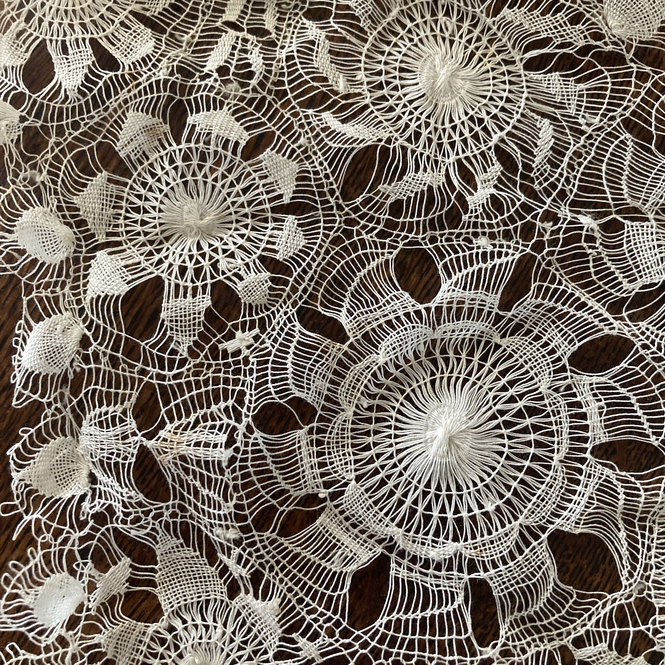
Tape lace which you may recognize as Battenberg lace is created using a base form of tape and embellished to create a design as well as connecting the tape together to create a completed item.
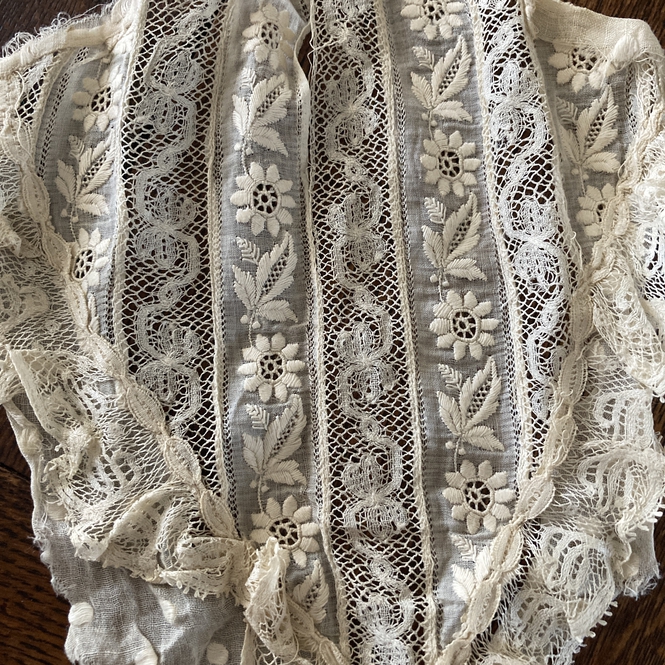
Machine lace is any lace made using a mechanical device. Machine lace can be just as intricate and detailed as handmade lace.
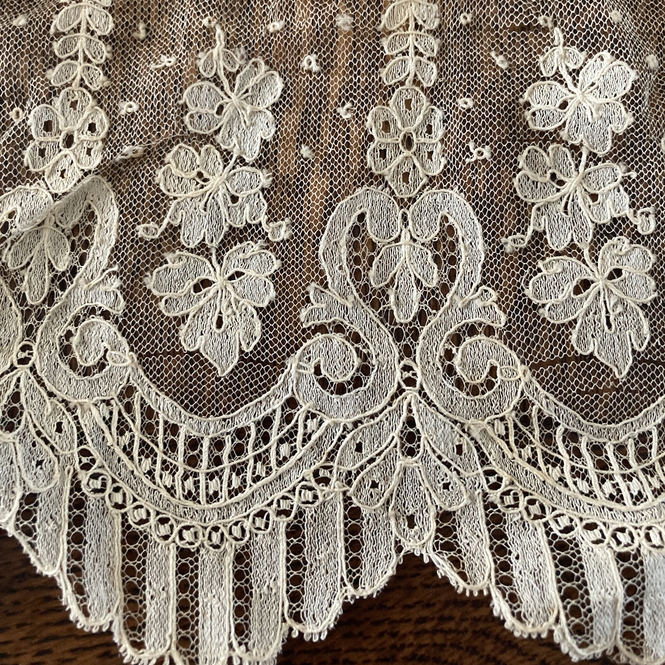
Tatted lace is a form of delicate lace made using a shuttle or tatting needle which is long and untapered. It involves tying a series of knots to create a pattern.
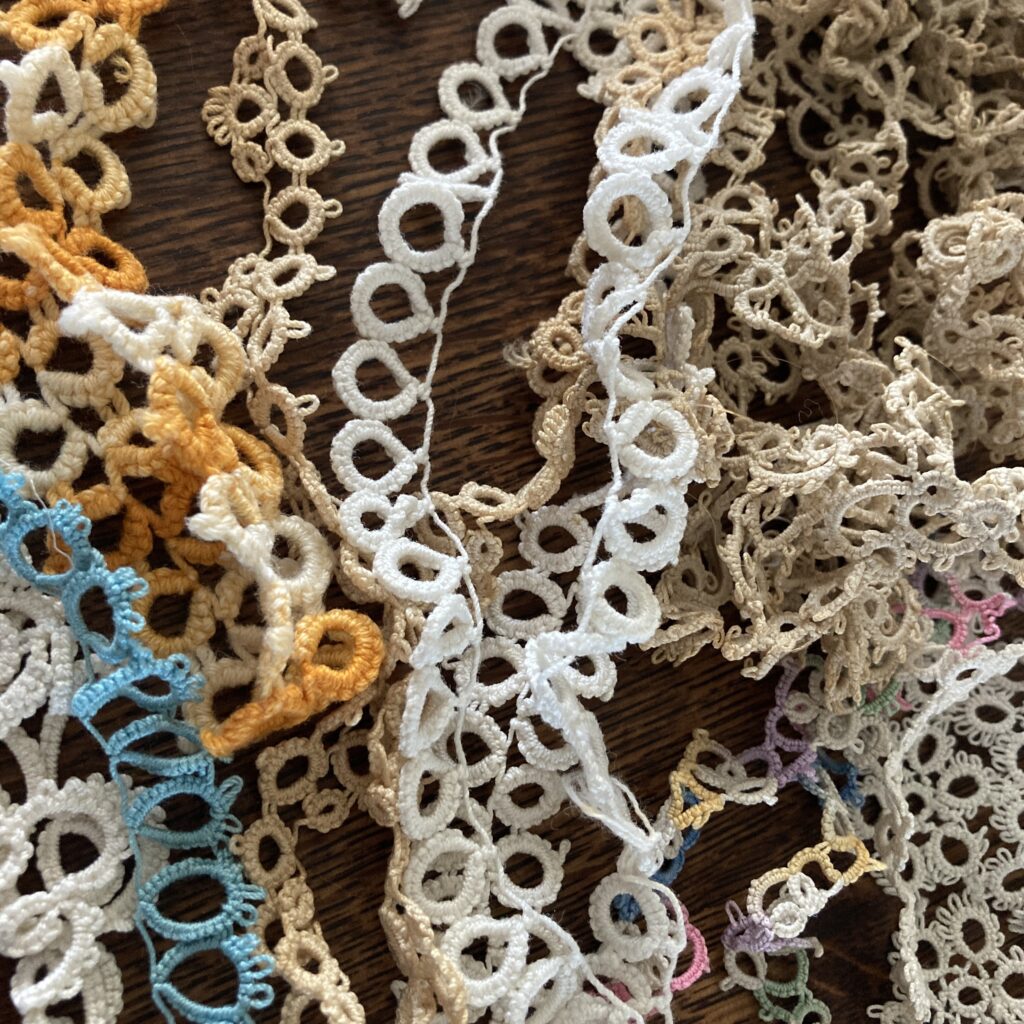
Crochet or knit lace is done with a crochet hook or knitting needles rather than a sewing needle. Crochet or knit lace is done on a much larger scale than other types of lace. This is due to both the thread or yarn being thicker than the thread used for needle or bobbin lace as well as the needles used and the technique creating larger stitches. Crochet lace also included filet lace.
For more history of lace, historical information and pattern identification check out some of these reference websites.
The Rook and the Raven: Identifying Antique Lace
The Lace Guild: A Brief History of Lace
SFO Museum (San Francisco International Airport): A Sumptuous History
Gutenberg.org: Lace: Its Origin and History
